I spent last weekend hiking the Sussex Ouse Valley Way, a 42 mile path created in 2005 that roughly follows the course of the river Ouse from source to mouth. It starts in the village of Upper Beeding and winds its way east then southwards down to Newhaven, along the way it passes through the High Weald area of outstanding natural beauty and the South Downs National Park.
At nine am on Saturday morning the weather was typical for an English April; a little chill, dew on the grass, sun out, but clouds milling around threatening to precipitate later. Fortunately the unpredictable weather decided not to rain on us all weekend, indeed the first day was rather charming with a good dose of vitamin D and a ruddy complexion by the end of it. The Sussex Ouse valley way (they had to put the county in as there are a lot of Ouses around Britain) started with a signpost and an interpretive sign next to the village hall. The map on the sign showing the route made me momentarily gulp at the length of the path – as it seemed to traverse the larger part of Sussex.
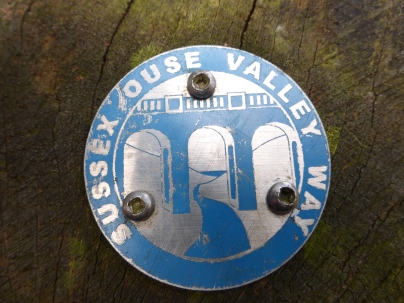
The Ouse way (as I shall henceforth call it) was created by linking up pre-existing footpaths that ran as close as possible to the course of the river. The only problem with it is that the route often strays quite far from the river and also wiggles about an awful lot in its attempt to hug the Ouse. So alas the path does not start at the source of the Ouse (which we didn’t even see) but instead crosses over the fledgling brook several times as it meanders over the countryside like a drunk driver.
Somewhat unexpectedly, not far after setting out, I heard quite distinctly a Nightingale singing brief snatches of tune from within a dark rhododendron, I only glimpsed a flitting shape but I nonetheless walked on with a smile on my face. Not much further on we (my godfather Robin and I) saw a Red Kite floating serenely over the pastures, it was barely flapping its wings but its forked tail was swiveling like your dad’s hips used to do on a 70’s dance-floor. It passed very close over an adjacent field, allowing Robin and I to practice what I call the ‘Kite face’ which is the expression I always make upon seeing one of these birds of prey – eyes popping, unblinking, mouth slightly ajar, followed by a wide grin.
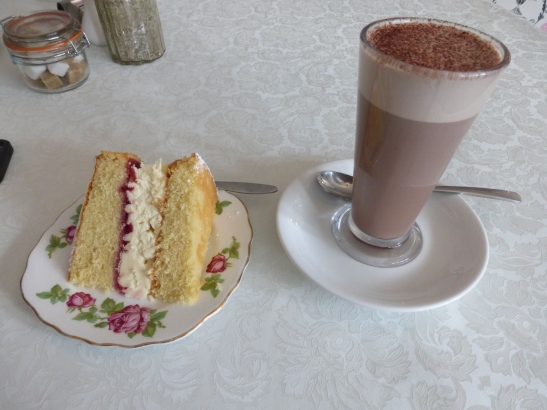
Our first rest-stop was in Handcross, where we sat in a cafe decorated so violently pink and flowery and ‘sweet’ it was enough to make your eyes bleed. However I had a delicious Vicky sponge with a decent hot chocolate that made it worth the torturous decor. A small stretch of the legs later and we came upon Staplefield green, and sitting upon the green, basking in the sun; were two Mistle Thrushes. These are large grey and white birds that inhabit only the deep countryside, they are unpredictable to see and have a melodious song – which I later heard as another individual sang from a tree-top in the late afternoon.
A good few miles later we sat down wearily upon the grass; we were now in the Ouse valley proper and had a fab view of Balcombe viaduct which carries trains between Brighton and London. It is a Victorian construction built in a Romanesque style with arches and balustrades – it is quite an impressive piece of architecture and dominates the valley. From the blossoming blackthorn hedge behind me I could hear and see a Whitethroat, Chiffchaffs, a Blackcap and various titmice full of spring gaiety.
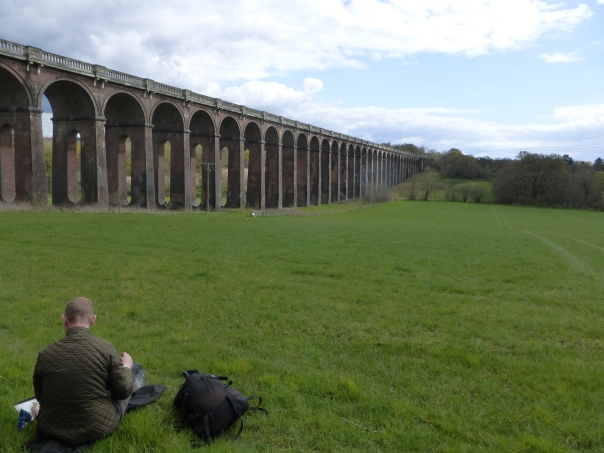
The shadows began to lengthen and we still had many miles to go, but crossing one small field I saw my first Swift of the year – a sharp, dark shape careering through the blue which cheered me up no end. A few fields and a wood further on and we were strolling along the ridge of a hill, as we approached a farm house I noticed some more aerial migrants flocking low over the grass. As we got closer it was plain that they were Swallows and House Martins, approximately 50 or more massing on the hill top to feed on the abundant flies that were rising out of the cow pats. We walked closer and closer but the birds didn’t flinch, eventually we were standing right in the middle of a shooting, darting crowd of hirundines that passed inches from my head. With the golden light that comes just before the sun sets this moment with such graceful, skilled birds was something I hope never to forget.
The next morning we shivered out of our sleeping bags, having spent the night in an open field full of lumps with nothing but a bivvy-bag to protect us from the elements (in this case dew and the cold). I shoved some eccles cakes into my mouth and with very stiff and painful limbs we creaked onward through a quite wonderful bluebell wood (there were many such woods and copses throughout the walk, simply stuffed with bluebells). As the sun rose in the sky the river widened, slowed down and started meandering as we passed from field to field; in several places the bends had been cut off and by-passed to make the river navigable back in 1790 – there were also several moldering locks.
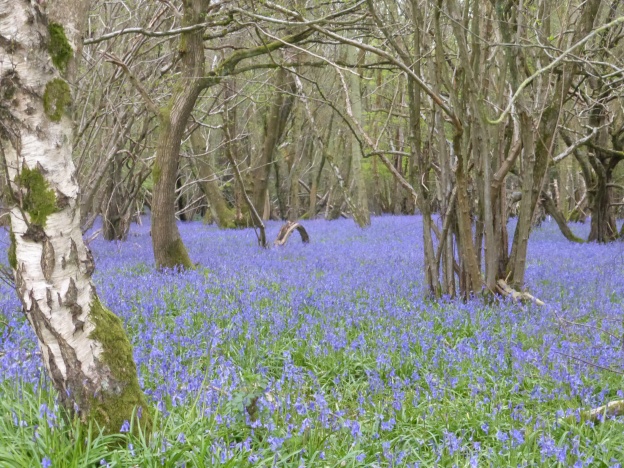
It was now that I started seeing Kingfishers, the banks were perfect for nesting and the water must have held a lot of fish as I saw several electric blue missiles pass us by. We could now also see the South Downs; a line of blue-green hills interrupted only where the Ouse passes through it. The country here was lovely and peaceful, with great views, greenery everywhere, ancient trees, ponds and reed-filled ditches and barely a soul to trouble us. A memorable moment was pausing for refreshment at the Anchor Inn, which sits all on its own by the river-bank, they did not do food before twelve and the urn wasn’t on so only coffee was available, which I don’t like. So I ended up sitting in the chill breeze with a cold glass of lemonade and a packet of salted crisps (they didn’t have salt and vinegar so I was stuck with the plainest flavour of all) neither things that I wanted really but hey-ho one has to put up with some things in life you know.
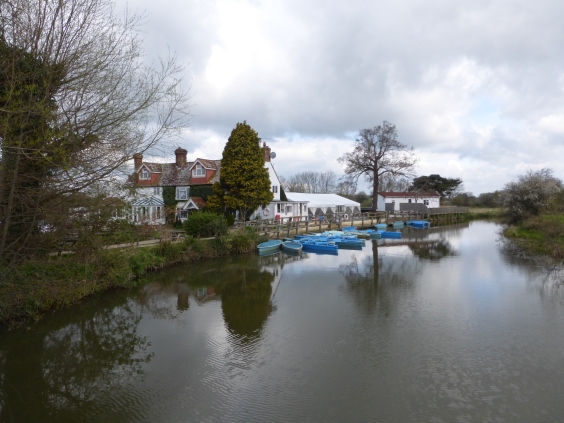
From then on the walk got both better and worse; better in that the views were great, the path was flat, it was near the end, I saw some great birds including both Sedge and Reed warblers singing (1st for the year), common sandpipers along the river, singing skylarks too. The worse was that my feet and legs were letting me down, after nearly 40 miles they felt like someone had been at them with a sledgehammer and I now walked with a bit of a limp. Anyway the company was good, the sun came out for the first time that day, we had a lovely lunch in Lewes and we had a lovely lie down in the sun and grass for 10-20 minutes (I forget how long).
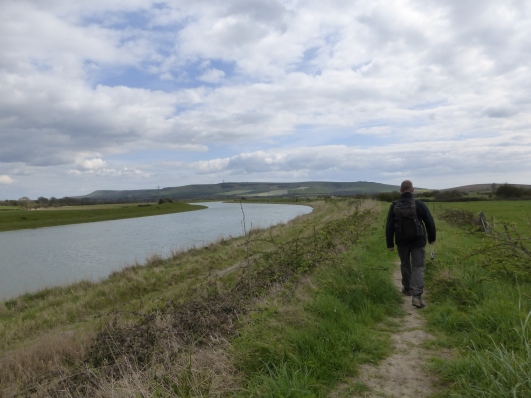
Finally we dragged our feet onto the platform of Newhaven station, after having a peek at the sea, and sat with great relief upon the train homeward. It was a very rural walk in all, with some delightful villages and pit-stops along the way, there was a lot of wildlife about and it was a do-able distance for 2 days, it may not follow the river very closely (until the last third) but is still an enjoyable and pretty walk.


October 19, 2016 at 4:27 pm
Hello, I love your style of writing, and the subject of course, because hiking and nature interest me a lot. Keep it up. Just a random question – are you studying anything related to nature, such as biology, chemistry, or is it just your hobbie besides university?
LikeLike
October 19, 2016 at 4:42 pm
Thanks very much, I am not currently studying anything, it is just my hobby, but I did study conservation biology at uni for a year, so yeah, I did but I don’t.
LikeLike
October 19, 2016 at 4:53 pm
Wow, if it’s just your hobby, then you’re very professional indeed, I don’t think I could writing anything remotely as good. Conservation biology seem really interesting (even though I studied mathematics myself), but what made you stop?
LikeLike
October 19, 2016 at 7:16 pm
Well I am flattered by being called professional, I’m little more than an amateur really. As for stopping the course – bit of a long story but very basically it was down to deciding I didn’t want to get into practical conservation but instead pursue writing. Which is why I have this blog!
LikeLike
April 28, 2016 at 10:27 am
truly wild, wild
LikeLiked by 1 person